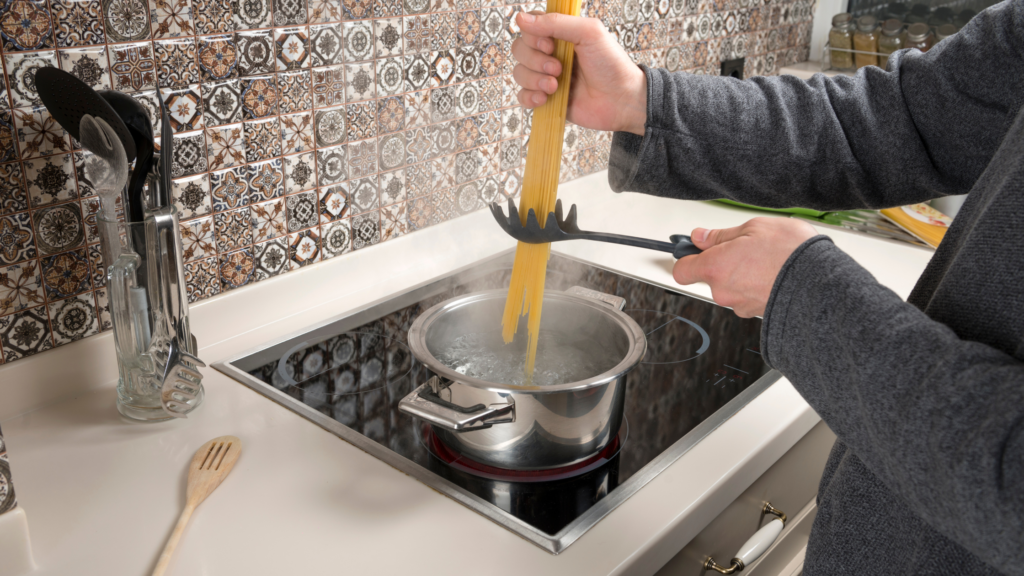Jot down what you’ll eat each day based on your schedule – task certain nights as pizza or takeout nights. Plan to use up leftovers so nothing gets wasted.
Double a soup or grain recipe, enjoy some now, and stash portions in the freezer for 10-minute future meals. Roasting sheet pans of veggies gives you quick access to ingredients.
Wash, chop, and store veggies right when you get home from the store. You’ll be glad later.
Mix up flavorful wet ingredients like lemon juice, oil, herbs, etc. ahead of time to pour over proteins and veggies, then just let them hang out together for a bit before cooking. The fridge lets everything infuse while you multitask.
Have all the sliced veggies and proteins prepped and ready before turning on the heat. Then use a big nonstick wok or skillet to avoid overcrowding as you toss everything together over high heat. Keeping ingredients moving ensures fast, even cooking.
Pasta, grains, and eggs turn out best when started in cold water before cranking up the heat. Set a phone timer though so you pull things off heat at just the right moment before reaching mushy overdone territory!
Simply lining a rimmed baking sheet with foil or parchment paper, tossing on vegetables and proteins, and popping into the oven results in a super simple, fuss-free dinner with barely any cleanup. Change up oil, herbs, spices, and protein choices for totally different meal vibes.
First sauté aromatics like onion, garlic, and ginger to build a flavor base. Then add liquids like wine, broth, and let the meats or beans simmer away. Layering ingredients and flavors all in one vessel result in a dynamic finished dish without dirtying multiple pots and pans along the way.
A quality swivel peeler makes smoothing sliding off the squash and melon skin a total breeze. Then a melon baller doubles as a handy coring tool plus a swift slicer all in one for chopping fruited up fast.
Plucking leafy herbs like cilantro or basil from stems with your fingers is way faster than using a knife. Then neatly stacking leaves and rolling them into a bundle allows you to swiftly chiffonade everything all at once into slender ribbons and ready to scatter over finished dishes. Freeze any excess chopped herbs suspended in olive oil in an ice cube tray for a flavor punch long after peak season is over.
Pull out your pressure cooker when faced with notoriously long-cooking foods like brisket, ribs, or even dense veggies like beets or turnips. The pressurized steam tenderizes cuts in a fraction of the time of oven braising or stovetop simmering. Quickly release pressure after minimum cooking times when dealing with delicate veggies or fish. But let the pot gradually depressurize and cool down naturally for meats to continue gently braising in the residual heat and moisture.
Glance through all the recipes you plan to tackle and think through what will be required as far as prepping ingredients, actual cooking, and cleaning up after. Be realistic about how long each meal may take, but also schedule in some padding since kitchen work often takes longer than we expect.
Avoid a dinner crunch by doing all your slicing, dicing, measuring, and marinating as your first push. Then move into staggered cooking based on what dishes take the longest. Maybe grains then sheet pan veggies in the oven first before searing proteins.
Check off steps across all recipes so final components finish at the same time.
Call out when sides or sauces are ready for proteins to be nestled in or topped with. Set timers for when seared meats should come out of the pan and rest before being sliced and served. And, prompt yourself through the ideal workflow sequence so nothing gets cold or overcooked.
